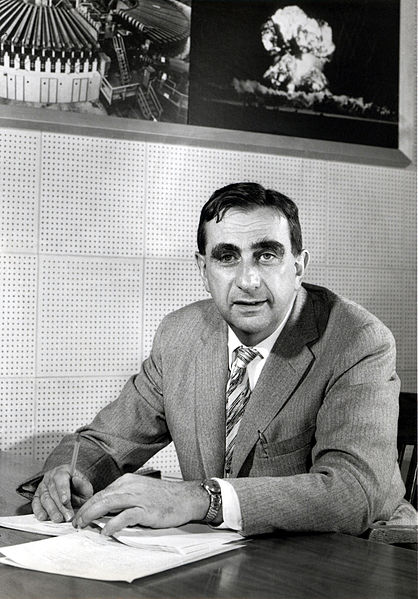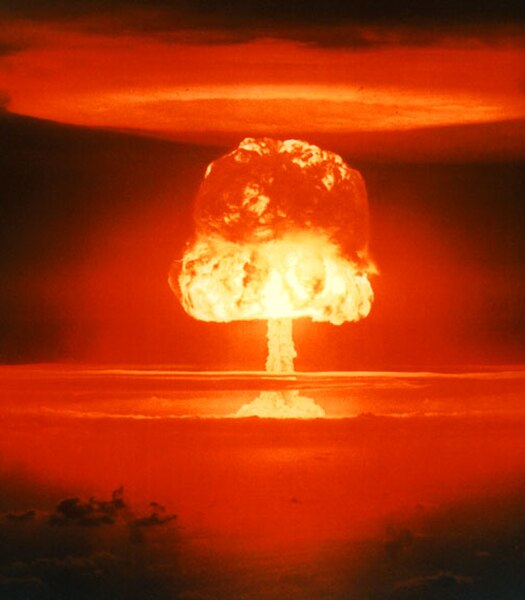History of the Teller–Ulam design
The Teller–Ulam design is a technical concept behind modern thermonuclear weapons, also known as hydrogen bombs. The design – the details of which are military secrets and known to only a handful of major nations – is believed to be used in virtually all modern nuclear weapons that make up the arsenals of the major nuclear powers.
Ivy Mike, the first full test of the Teller–Ulam design (a staged fusion bomb), with a yield of 10.4 megatons (November 1, 1952)
Physicist Edward Teller was for many years the chief force lobbying for research into developing fusion weapons.
Ivy King, the largest pure fission bomb tested by the US, yielding 500 kt (November 16, 1952)
A view of the Sausage device casing, with its diagnostic and cryogenic equipment attached. The long pipes would receive the first bits of radiation from the primary and secondary ("Teller light") just before the device fully detonated.
A thermonuclear weapon, fusion weapon or hydrogen bomb (H bomb) is a second-generation nuclear weapon design. Its greater sophistication affords it vastly greater destructive power than first-generation nuclear bombs, a more compact size, a lower mass, or a combination of these benefits. Characteristics of nuclear fusion reactions make possible the use of non-fissile depleted uranium as the weapon's main fuel, thus allowing more efficient use of scarce fissile material such as uranium-235 or plutonium-239. The first full-scale thermonuclear test was carried out by the United States in 1952 and the concept has since been employed by most of the world's nuclear powers in the design of their weapons.
Edward Teller in 1958
Operation Castle thermonuclear test, Castle Romeo shot
Operation Grapple on Christmas Island was the first British hydrogen bomb test.
One of France's Triomphant-class nuclear-armed submarines, Le Téméraire (S617)








